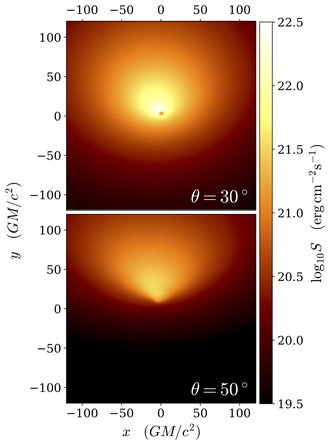
Researches at CAMK in collaboration with faculty and students at the Silesian University in Opava, along with members of the Black Hole Initiative at Harvard University have uncovered a new model for mass capture of gas by a black hole. Using a complex numerical code, incorporating many facets of physics (including magnetohydrodynamics, radiation and Einstein's theory of gravity), the team was able to simulate a stable accretion disk at sixty percent of the critical "Eddington rate" ($0.6 \dot{M}_{\rm{Edd}}$). By comparing the results to earlier simulations at higher accretions rates, a new family of accretion disks was discovered.
The standard model of accretion disks cannot describe luminous black holes, because at rates of mass transfer of several tenths of Eddington luminosity $\0.1 dot{M}>dot{M}_{\rm{Edd}}$ the disk is thermally unstable. The new class of disks discovered by our team avoids the instability with an additional source of pressure provided by the strength and configuration of the magnetic field, which has a large radial component.
This family of disks is peculiar because of its unexpected arrangement into layers. The majority of mass in the disk is concentrated in the equatorial plane, just like in the standard model. However, on top of this is another layer of turbulent plasma, which, while much less dense than the equatorial plane, transports the majority of the gas in the inner regions. This layer is geometrically and optically thick, leading to a strong dependence of the observed properties of the disk on the angle of the line of sight. The figures above show theoretical images of the black hole disk viewed from two different elevations. While the black hole can be seen when the observer looks down the axis of the system, at larger inclinations ("edge on") the central region becomes obscured. This has strong implications for the modeling of the spectra and can lead to new insights in our understanding of accretion onto compact objects.






